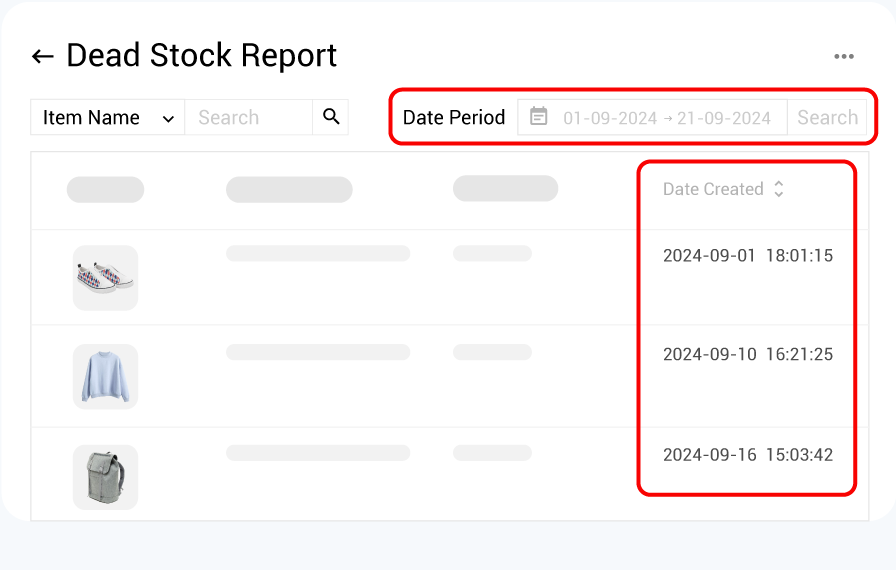
Effective inventory management is crucial for businesses, especially in e-commerce, where every product and sale counts. If you’re not keeping track of your inventory, you may be sitting on a stock that’s not generating any revenue, also known as “dead stock.”
In this post, we’ll explore how you can identify and manage dead stock, optimize your inventory, and ultimately boost your sales.
What is Dead Stock?

Dead stock refers to inventory that hasn’t been sold within a specified period. It can include items that are outdated, out of season, or just haven’t gained enough customer interest. Left unmanaged, dead stock can pile up, occupying space and wasting valuable capital. It’s a common challenge, but the good news is that it’s completely manageable with the right approach.
Why Does Dead Stock Matter?

1. Space & Resources
Warehouse space is limited and costly. When dead stock takes up valuable space, you lose the opportunity to store high-demand items. Additionally, resources such as labor, storage, and handling can be wasted on unsold products that are taking up space without generating revenue.
2. Stalling Cash Flow
Every item in your inventory ties up capital that could be better spent on high-demand or new products. The longer dead stock remains on your shelves, the more it restricts cash flow that could otherwise fuel business growth or restock bestsellers.
3. Stock Ageing & Obsolescence
Over time, products may become outdated or lose value. For example, fashion items may go out of style, or technology products may become obsolete. The longer dead stock sits in your inventory, the more likely it is to decrease in value, making it harder to sell later.
How to Identify and Manage Dead Stock?

Managing dead stock is essential for maintaining a healthy and efficient inventory. One effective way to manage dead stock is by leveraging tools like a Dead Stock Report. Here’s how it can help:
1. Identify Unsold Items
The Dead Stock Report provides a clear view of inventory items that haven’t sold within a specific timeframe. This insight allows you to take action before stock becomes outdated or obsolete, helping you reduce waste and preserve resources.
2. Enhance Marketing Efforts
With detailed data on slow-moving items, you can adjust your marketing and purchasing strategies. This helps you avoid overstocking and ensures better use of your resources. You can also use this information to boost sales for underperforming products.
3. Optimize Inventory Management
The report provides valuable insights to refine your inventory strategy, helping you avoid overstocking and make better use of resources. It ensures your stock aligns with customer demand, reducing waste and maximizing profitability.
Strategies to Move Dead Stock

Once you’ve identified your dead stock, it’s time to take action. Here are a few strategies that can help you move unsold products: Forecast Your Inventory Starting Today!
1. Promotions & Discounts
Offering discounts or running promotions can help you move products that haven’t been selling well.Clearance sales, bundle deals, and limited-time offers can encourage customers to buy products they might have ignored otherwise.
2. Reevaluate Your Marketing
If a product isn’t selling, it might be a marketing issue rather than a demand issue. Revisit your product listings, images, and descriptions. Highlight features that might appeal to customers, and experiment with different marketing channels, such as social media ads, or influencer collaborations.
3. Repurpose or Repackage
If you have products that just aren’t resonating with your customers, consider repackaging them into new offers or combining them with other items. For example, bundling a slow-moving product with a bestseller can help increase its visibility and make it more appealing to buyers.
4. Donate or Return
In some cases, if the products are unsellable, consider donating them to charity or returning them to the supplier (if possible). While this may not always be ideal, it helps you clear out inventory without letting it sit indefinitely.
Conclusion

Dead stock is an inevitable part of inventory management, but it doesn’t have to be a long-term challenge. With a solid inventory management system and smart marketing strategies, you can minimize its impact on your business and improve your business profitability.
Start exploring the Dead Stock Report and discover its value in managing unsold inventory. It’s time to breathe new life into your dead stock—take action today!
Image Credits and References: Freepik










